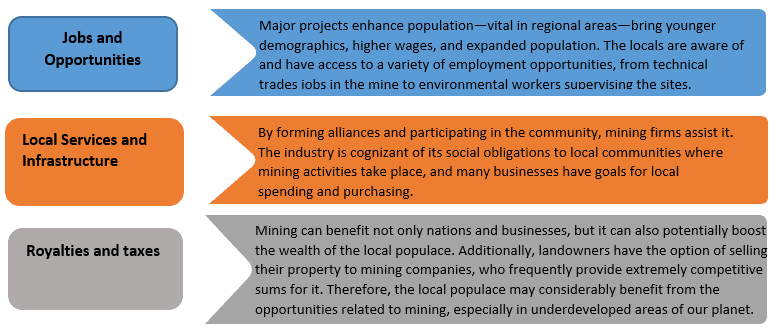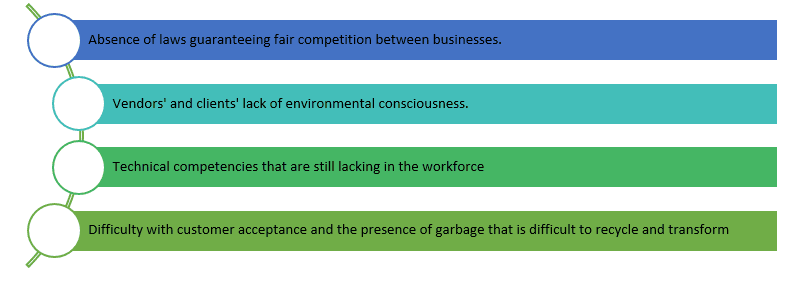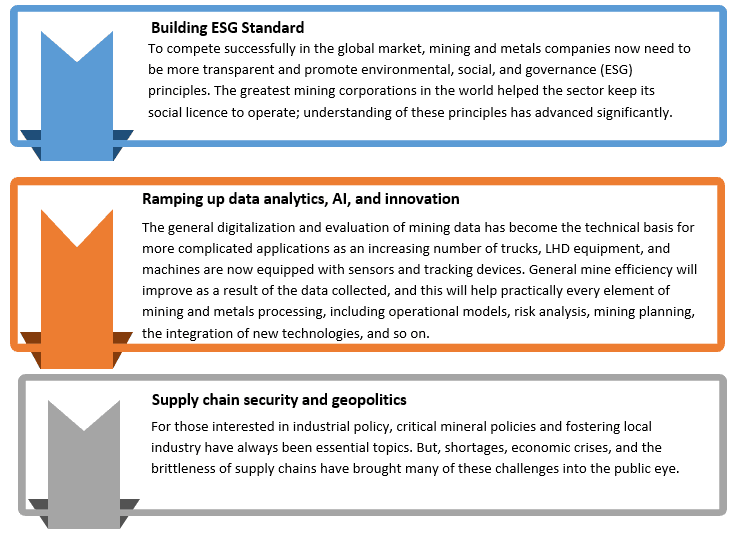Trasformare l'attività mineraria: liberare il potenziale nascosto dell'economia circolare
Panoramica
L'attività mineraria è il processo di rimozione delle risorse geologiche della Terra, che vengono spesso utilizzate come materie prime. In numerosi luoghi in tutto il mondo, l'attività mineraria viene eseguita per una vasta gamma di materiali. I materiali estratti più frequentemente sono carbone, oro, ferro e sabbia. La miniera più antica conosciuta è stata scoperta sulla cresta di Bomvu di Eswatini e gli esseri umani vi estraggono minerali da migliaia di anni. Sulla base dell'analisi del radiocarbonio, la miniera di Ngwenya ha più di 40.000 anni.
Poiché i rifiuti vengono eliminati e i prodotti vengono riutilizzati anziché sprecati, l'economia circolare ristruttura intere catene del valore. Mentre l'idea di rifiuto si sta trasformando in un'idea di valore, la circolarità è un catalizzatore per nuove opportunità in tutti i settori attraverso nuovi modelli di business innovativi.
Accedi a un report completo (inclusi grafici e figure): https://univdatos.com/report/lead-mining-software-market/
Sia le emissioni che i rifiuti derivanti dalle attività minerarie sono obiettivi di riduzione o eliminazione. Una strategia in esame è la "circular economy" (economia circolare). Questa idea mira a ridurre i rifiuti e l'inquinamento creando valore da operazioni tipicamente dispendiose.
Impatto positivo dell'attività mineraria nell'economia circolare

L'attività mineraria può giovare non solo alle nazioni e alle imprese, ma anche potenzialmente aumentare la ricchezza della popolazione locale. Inoltre, i proprietari terrieri hanno la possibilità di vendere la loro proprietà alle società minerarie, che spesso forniscono somme estremamente competitive per essa. Pertanto, la popolazione locale può trarre notevoli vantaggi dalle opportunità legate all'attività mineraria, soprattutto nelle aree sottosviluppate del nostro pianeta.
Massimizzare l'impatto dell'economia circolare
Un componente chiave della soluzione è il passaggio a materiali naturali, ma solo se prodotti in modo sostenibile e solo se anche i modelli di consumo cambiano. Anche il riconoscimento dell'interconnessione dell'economia mondiale è fondamentale. Alluminio, rame, piombo e zinco, che vengono estratti per l'utilizzo in una varietà di settori, sono tra i minerali e i metalli che vengono frequentemente utilizzati nell'elettronica. Pertanto, aumentare la circolarità nel solo settore dell'elettronica non ridurrebbe in modo significativo la dipendenza da queste risorse. Per realizzare un cambiamento sistemico, diversi settori devono riformarsi.
È fondamentale continuare a dare priorità alla giustizia sociale e al benessere. L'adozione di un'economia circolare, ad esempio, potrebbe rifocalizzare l'occupazione e gli investimenti dalla produzione e dalla fabbricazione (che spesso avvengono nei paesi a basso reddito) verso le fasi della catena del valore come la riparazione, la rivendita, lo smistamento e il riciclaggio (che sono spesso concentrati nei paesi più ricchi). Dobbiamo assicurarci che i vantaggi economici siano distribuiti correttamente per garantire che un'economia circolare sia completamente vantaggiosa.
Fattori che influenzano l'attività mineraria nell'economia circolare

Tre modi in cui il settore minerario può migliorare l'economia circolare

Modi in cui l'attività mineraria contribuisce allo sviluppo sostenibile
Gli SDG hanno il potenziale per essere raggiunti con l'aiuto delle imprese minerarie. Le imprese minerarie hanno la capacità di contribuire direttamente alla crescita economica, all'occupazione e al profitto nelle nazioni a basso reddito. Inoltre, possono assicurarsi che i vantaggi dell'attività mineraria durino per tutta la vita della miniera stessa attraverso partnership con il governo e la società civile, assicurando che l'attività mineraria abbia un'influenza favorevole sull'ambiente, sul cambiamento climatico e sul capitale sociale.
Le aziende minerarie saranno anche invitate a estrarre in modo responsabile, generare meno rifiuti, utilizzare procedure più sicure, adottare tecnologie sostenibili innovative, incoraggiare il miglioramento del benessere delle comunità vicine, ridurre le emissioni e migliorare la gestione ambientale.
Conclusione
Il settore minerario e metallurgico sta subendo un cambio di paradigma che non si è mai verificato prima, poiché inizia a integrare nuove tecnologie e ad affrontare le questioni sociali e ambientali. Il settore può rafforzare la sua posizione fondamentale in un mercato globale in continua evoluzione aumentando la consapevolezza di questi problemi, concentrandosi su soluzioni digitali innovative, aumentando la domanda di materiali e le richieste degli investitori.
Un'economia circolare coinvolge mercati che incoraggiano il riutilizzo degli oggetti piuttosto che il loro smaltimento e la successiva estrazione di risorse. Tutti i tipi di rifiuti, inclusi indumenti scartati, rottami metallici ed elettronica obsoleta, vengono riciclati o utilizzati meglio in tali economie.
Autore: Suryansh Verma
Per maggiori dettagli, contattare:
UnivDatos Market Insights
C80B, Sector-8, Noida,
Uttar Pradesh 201301
Per domande relative alle vendite, contattaci all'indirizzo [email protected]
